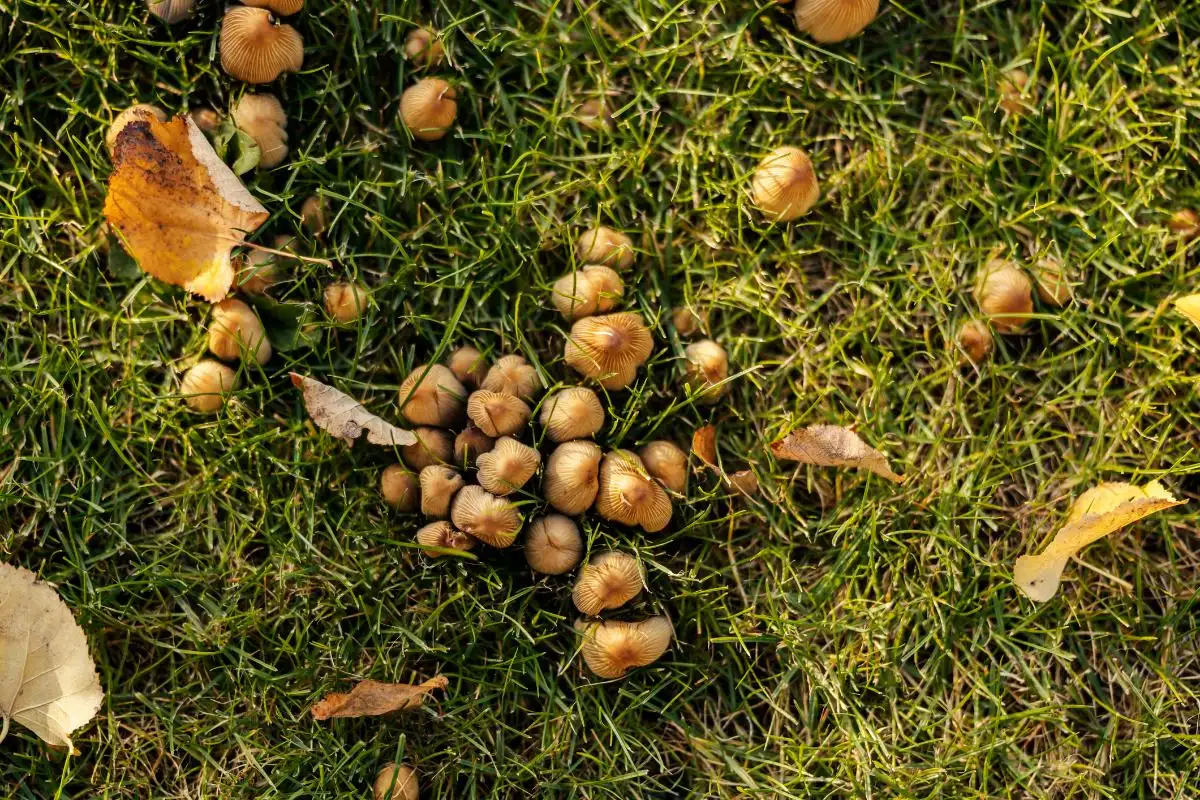We’ve all been there. One morning you got out feeling refreshed, only to be irked by the unsightly scene of fleshy umbrellas peaking all over your backyard.
Luckily, while their sudden appearance can be puzzling, they’re not unremediable.
If you’re looking for ways to deal with these yard nuisances, then you should really keep reading. Today, I’ll talk about five of the most common types of backyard mushrooms and share the best methods to eliminate them.
Meet These 5 Common Types of Backyard Mushrooms
There are over 14,000 species of mushrooms growing in the US.
While most of them are harmless, they could appear unpleasant when they start popping their heads up across your well-maintained backyard.
1 – Meadow Mushrooms (Agaricus campestris)
While there’s a meadow in its name, this type of mushroom is one of the most infamous fungi popping in backyards and lawns. They typically sprout in early summer.
Meadow or field mushrooms have white or grayish caps. Their gills, the frilly sheets underneath their caps, are pinkish or brownish.
The good news is that meadow mushrooms are edible. They’re closely related to the common button and share an almost identical taste and smell.
Be careful foraging them, though. There are a few inedible and poisonous look-alikes to the meadow mushrooms like the destroying angel.
2 – Mowers Mushrooms (Panaeolina foenisecii)
Haymakers, brown hay, lawnmowers—this type of mushroom comes in many names. But they’re tiny, with caps as little as an inch, and are common in North America and Europe.
Mower mushrooms love growing in the summer. Plus, they’re annoyingly pesky as they usually sprout in frequently mowed lawns.
They’re not edible, but they’re also non-poisonous. Their color appears brown to orangey beige, depending on the moisture of their environment.
3 – Ringless Honey Mushrooms (Desarmillaria caespitosa)
If you have dead organic materials around your backyard, such as tree stumps and fallen logs, chances are you’ve already come across a ringless honey.
These fungi are a relative of the honey mushroom. Adorning honey-colored caps and stems, they usually grow between September and November.
While fungi are a crucial element of an ecosystem, ringless honey mushrooms are considered destructive and invasive. When attached to a host plant, they kill it by cutting off its water and nutrients.
4 – Common Stinkhorn (Phallus impudicus)
Here’s a mushroom that would lose any popularity contest just by its stinky name: the common stinkhorn. Name aside, it does have other unpleasant things going on.
Typically growing in mulched gardens and forested yards, this mushroom is notorious for its foul smell, similar to rotting meat, and phallic appearance.
In short, you won’t like any of this fungus sprouting anywhere near your home.
If you own pets, be sure to remove the stinkhorn immediately after you notice them. They’re known to attract dogs and make them sick.
5 – Fairy Ring Mushrooms (Marasmius oreades)
Also called scotch bonnets, fairy ring mushrooms are the kind you’d see inside the pages of a fairytale book.
But that’s only because they often form a circular pattern when growing, which, according to olden legends, is said to be caused by pixies or fairies dancing.
Suffice it to say that no magic is involved in their appearance, most importantly, they’re harmless. That is, as long as you don’t need your lawn blemish-free.
Fairy ring mushrooms have tiny white to tan-colored, umbrella-shaped caps. They’re edible but should be avoided as they resemble a few toxic mushroom species.
How to Prevent Mushrooms From Spawning
Mushrooms can only grow if they’re provided with the right conditions. You can easily get rid of them by addressing the factors that contribute to their growth in your backyard.
Fungi love soggy and shady areas. So, to prevent them from growing, avoid scenarios where moisture sits for a long time.
You may need to cut down some watering, level uneven ground areas, remove dead organic matter, clean your garden mulch, or install French drains to redirect water away.
Aerating the soil is another excellent method to destroy the spores underground.
As a last-ditch method, you can apply fungicide to eliminate the pesky fungi cropping up around your home. While it may sound extreme, it’s a surefire way to prevent mushrooms from ruining your backyard aesthetic.
Final Thoughts
There you go! Those are five of the most common types of mushrooms seen in your backyard and how to remove them.
It doesn’t take much. With a few simple gardening tricks, you can save yourself from the embarrassment of a shroomed-up yard.
Ben has a bachelor’s degree in construction engineering. When not constructing or remodeling X-Ray Rooms, Cardiovascular Labs, and Pharmacies, you can find him at home with wife and two daughters. Outside of family, He loves grilling and barbequing on his Big Green Egg and Blackstone Griddle, as well as working on projects around the house.
--
If you want more backyard tips including recipes, how-tos and more, make sure you subscribe to my youtube channel

